MOOT™
Museum Of Obsolete Technology®
Remote Controls
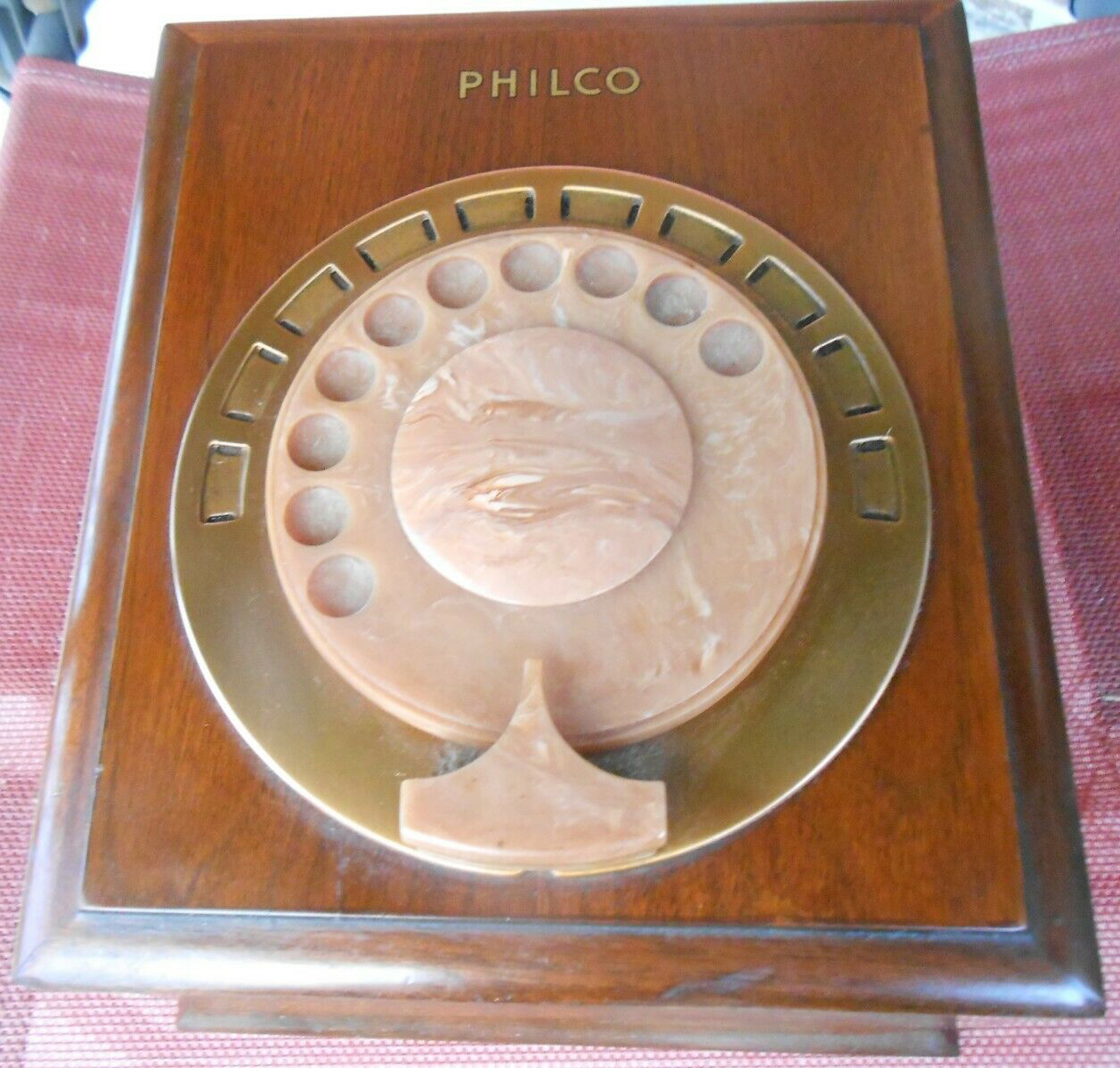
Philco's Mystery Remote
First Commercial Wireless Remote
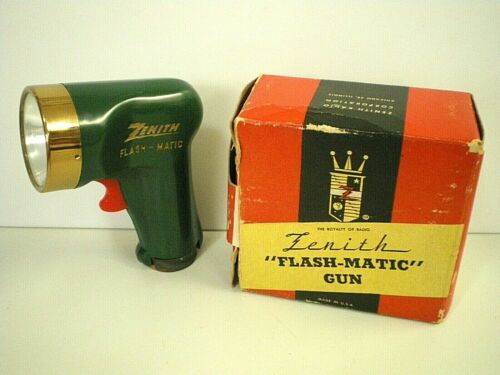
Zenith Flash Matic
First Television Remote
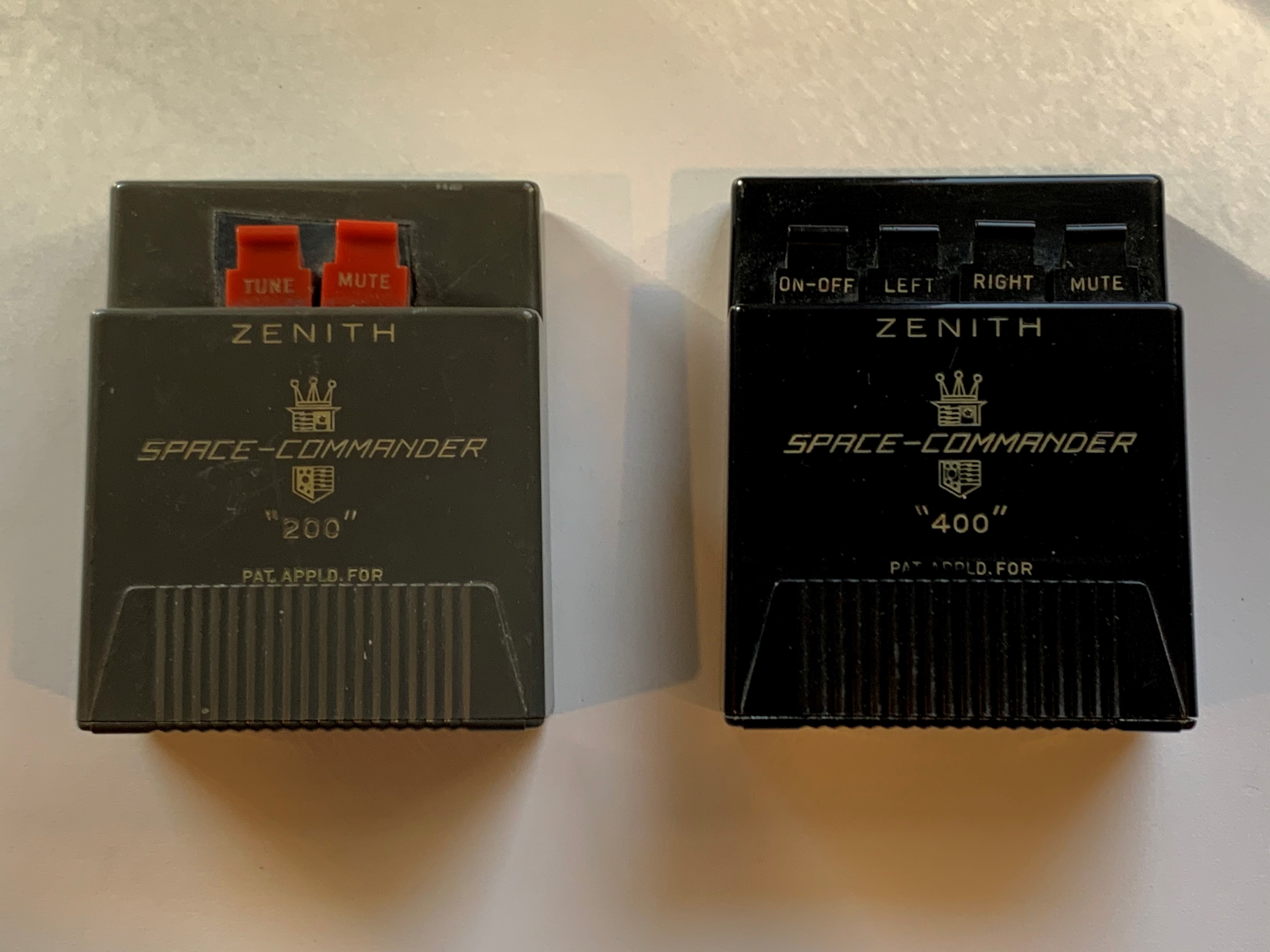
Zenith Space Commander
First Television Remote That Worked Well
First 'Clicker'
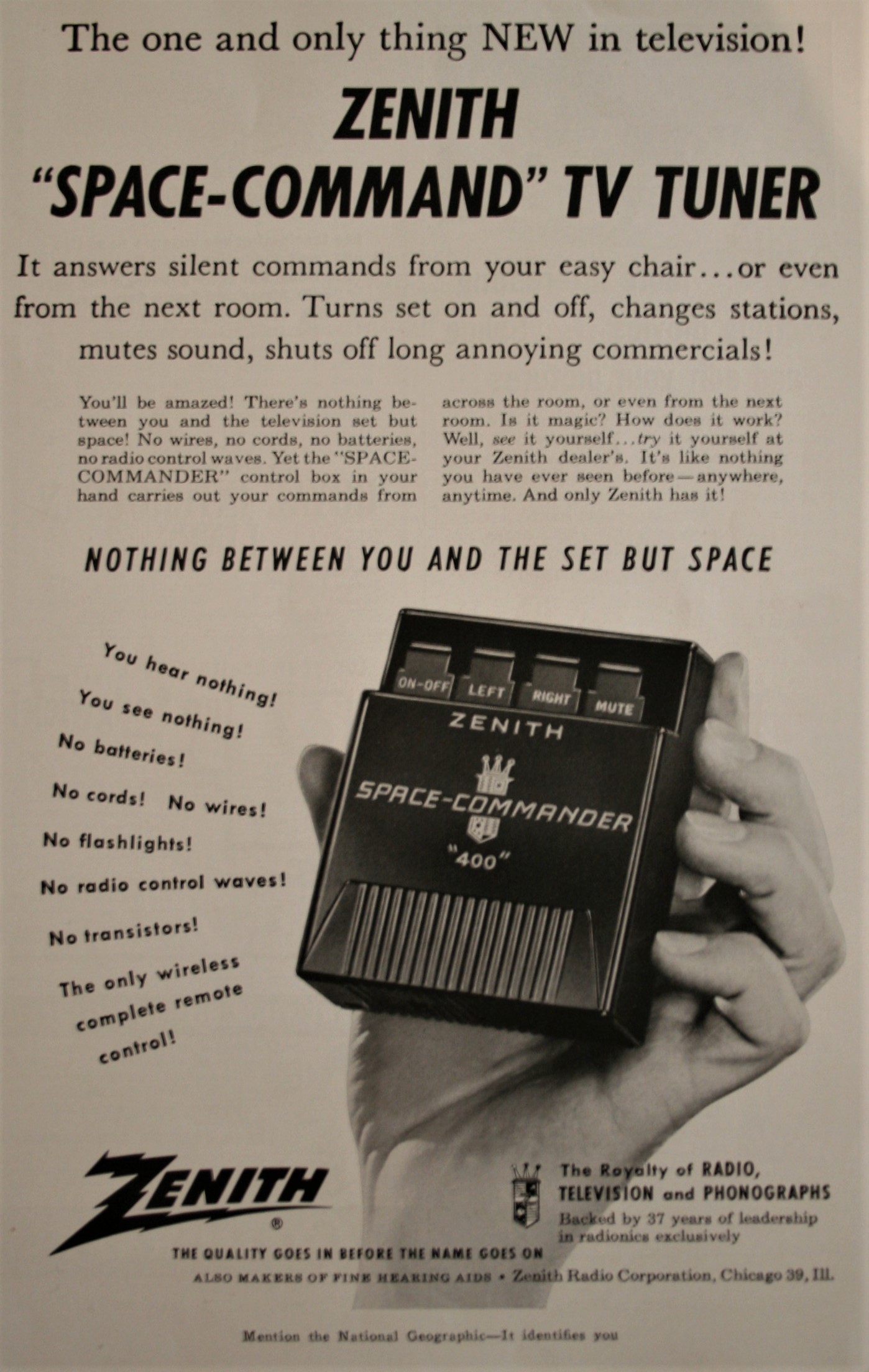
Zenith Space Commander Ad
Source: National Geographic Magazine
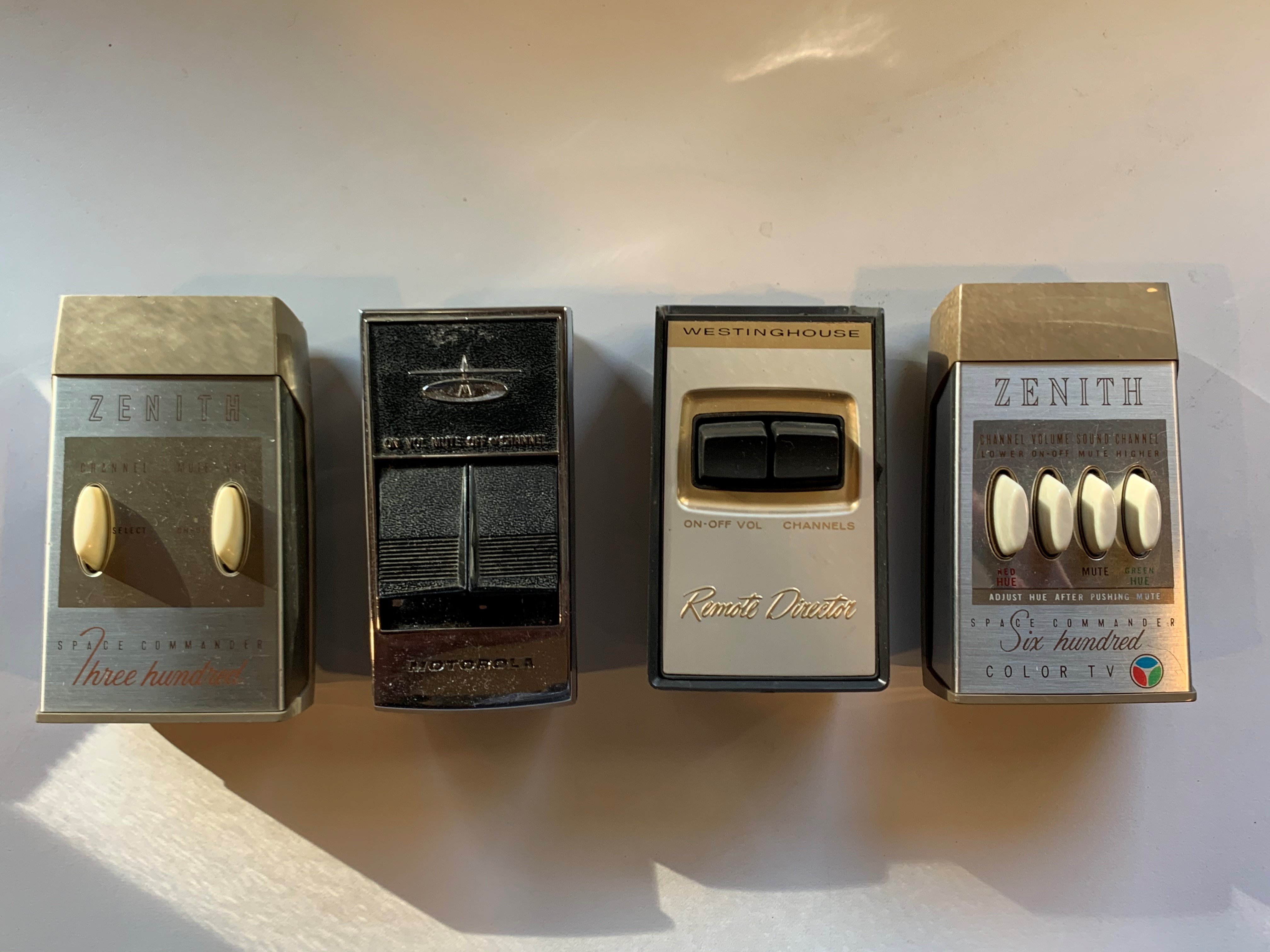
Second Generation Clicker Remotes
This basic design dominated the industry for several decades.
Philco's Mystery Remote (1939)
The first real product to shoot an invisible beam across the room to directly control a device was the Philco Mystery Control, first introduced in 1939. Philco's Mystery Control is a wireless remote-control unit for one of 11 different Philco console radios and radio-phones manufactured from 1939 through 1942. Through radios with a matching remote are fairly scarce today, the remotes themselves seemed to have been saved by society in greater quantities.
The Mystery Control utilized RF waves to issue commands to a radio with a fairly large (6-inch by 8-inch by 4-inch) and fairly heavy box (several pound) that resembled a rotary phone without the handset, and also functioned like one.
As the site Philco Repair Bench describes:
Dialing "Loud" and pressing down the finger stop (or volume control lever) makes the Mystery Control send a continuous RF signal to keep the volume control motor in the radio turning to the desired loudness. Releasing the finger stop will halt the volume change. Dialing "Soft" and pressing down the finger stop keeps the volume control motor in the radio turning to your desided level. If you continue holding the finger stop down the motor will eventually click off the power switch, turning off the radio. The radio cannot be remotely turned on since the control frequency receiver in the set is also off.
The MOOT's specimen currently ahvae no labels on the outer ring of each location. The right most position was lableed 'loud', the next one counter-clockwise is normally labled 'soft', and the other spots usually have the call signs of individual local radio stations.

Zenith's Flash-Matic (1955)
While some basic hard-wired remotes for televisions had been offered for some time and could turn a TV on and off, it took until 1955 for the wireless world to come to the television world. The remote itself is pretty simple. It's just a flashlight... an expensive one. The key to getting it to work is advanced (for the time) electrical components in the TV set itself. Each of 4 corners of a TV around the screen were outfitted with photo-sensors. The light signal from the remote would active one of four control functions, which turned the picture and sound on or off, and turned the channel turner dial clockwise or counter-clockwise. The ability to mute the sound was marketed as a way to "shut off annoying commercials while the picture remains on the screen." This innovation also serves as the first feature found on a remote control not available on the main console itself. The Flash-Matic was met with strong demand, though only a year later was to be replaced by superior technology.

Zenith's Space Commander / Space Command (1956)
The Zenith Space Commander, released in 1956, represented a significant advancement in remote technology for a simple reason -- it was reliable.
Zenith's Flash Matic had been a commercial success, but its susceptibility to interfere was its major drawback. Zenith wanted a next generation to expand sales. A radio wave based system was briefly considered but rejected because the signals could easily travel and inadvertently adjust a neighbor's television! Furthermore, Zenith hoped for a system that didn't require batteries, as customers unfamiliar with the technology might be concerned something was wrong with their television.
Zenith's solution, created by Robert Adler, was to have a device that used soundwaves to transmit signals to the TV. The Space Commander remotes used aluminum rods of different lengths, very similar to tuning forks, struck by hammers toggled by the buttons on the device, to produce high-frequency tones that would be interpreted to control functions on the television set. When one presses the button all the way down, the hammer would flick and strike the aluminum rods, and a clicking noise was heard. Thus, remotes quickly became known as the 'clicker'.
The MOOT holds copies of the two first released versions of the Space Commander remotes, with 'Patent Pending' stamped on them and a sticker letting a consumer know that these were 'precisions devices'. The Space Commander brand went on for many years, and the base technology utilized by almost all manufacturers for several decades. In the 1960s the remotes were changed to generate ultrasonic sounds, and finally in the 1980s the gave way to infrared (IR) systems which were capable of sending a more complex signal supporting many more functions.
First Generation 'Clicker' Patent Pending Remotes in the MOOT collection:


*Ad = From a period issue of National Geographic Magazine
Second Generation 'Clicker' Remotes in the MOOT collection:

